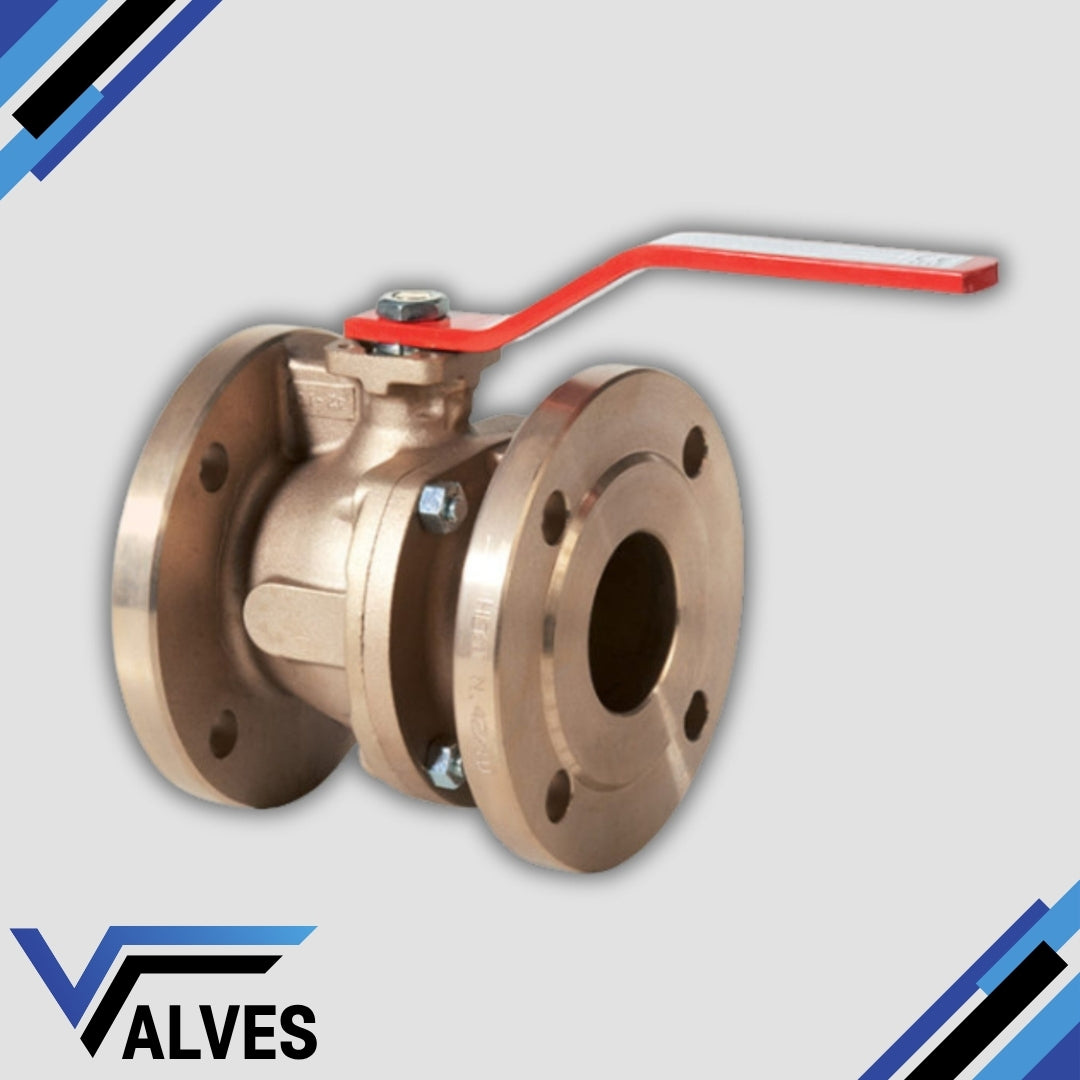Valves UK
Aluminium Bronze Ball Valve – Flanged PN16
Aluminium Bronze Ball Valve – Flanged PN16
Couldn't load pickup availability
Engineered for performance in aggressive and corrosive environments, the Aluminium Bronze Ball Valve – Flanged PN16 is built with a robust ASTM B148 aluminium bronze body, ball, and stem, offering superior resistance to seawater, chemicals, and high-pressure applications. Its full bore design ensures minimal pressure loss and unrestricted flow, making it ideal for demanding industrial and marine use.
This valve features PN16 flanged ends to DIN F4 face-to-face dimensions, with an ISO 5211 direct mount pad for easy actuator installation. Internally equipped with PTFE seats and Viton stem O-rings, it delivers a tight seal and extended service life. Designed for temperatures from -20°C to +150°C, and lever operated for reliable manual control, this valve combines premium build quality with practical performance.
Key Features:
- Flanged PN16, DIN F4 face-to-face
- ISO 5211 pad for direct actuator mounting
- ASTM B148 aluminium bronze body, ball & stem for excellent corrosion resistance
- Full bore design for maximum flow and minimal pressure drop
- PTFE seats and Viton stem O-rings for chemical and thermal durability
- Temperature range: -20°C to +150°C
- Lever operated for smooth and secure shut-off
- Ideal for seawater, oil, chemical, and high-performance applications
Share

FAQ's
What is the difference between a valve and an actuator?
What types of actuators are available?
The main types of actuators are:
Pneumatic actuators – use compressed air for fast, reliable operation.
Electric actuators – use electrical power for precise control.
Hydraulic actuators – use fluid pressure for high-torque applications.
Each type offers unique advantages depending on the environment, media, and system control needs.
How do I choose the right actuator for my valve?
To select the correct actuator, consider:
Valve type and torque requirement
Power source available (air, electric, or hydraulic)
Operating environment (temperature, humidity, hazardous area)
Control signal type (on/off or modulating)
Matching actuator torque and compatibility with the valve’s ISO mounting ensures reliable performance.
What are the main types of valves used in automation?
The most common valves in automated systems include:
Ball valves – for tight shutoff and quick operation.
Butterfly valves – for larger flow control with compact design.
Globe valves – for precise throttling and flow regulation.
Check valves – to prevent backflow.
Gate valves – for full bore flow isolation.
What’s the difference between a double-acting and spring-return actuator?
Double-acting actuators use air (or power) to both open and close the valve.
Spring-return actuators use air to open (or close) the valve, and a built-in spring to automatically return it to a safe position when power or air is lost — ideal for fail-safe operation.
How often should valves and actuators be serviced?
Regular maintenance intervals depend on operating conditions, but a good rule of thumb is to inspect every 6–12 months.
This includes checking for leaks, lubrication, seal wear, and actuator responsiveness to prevent unexpected downtime.

